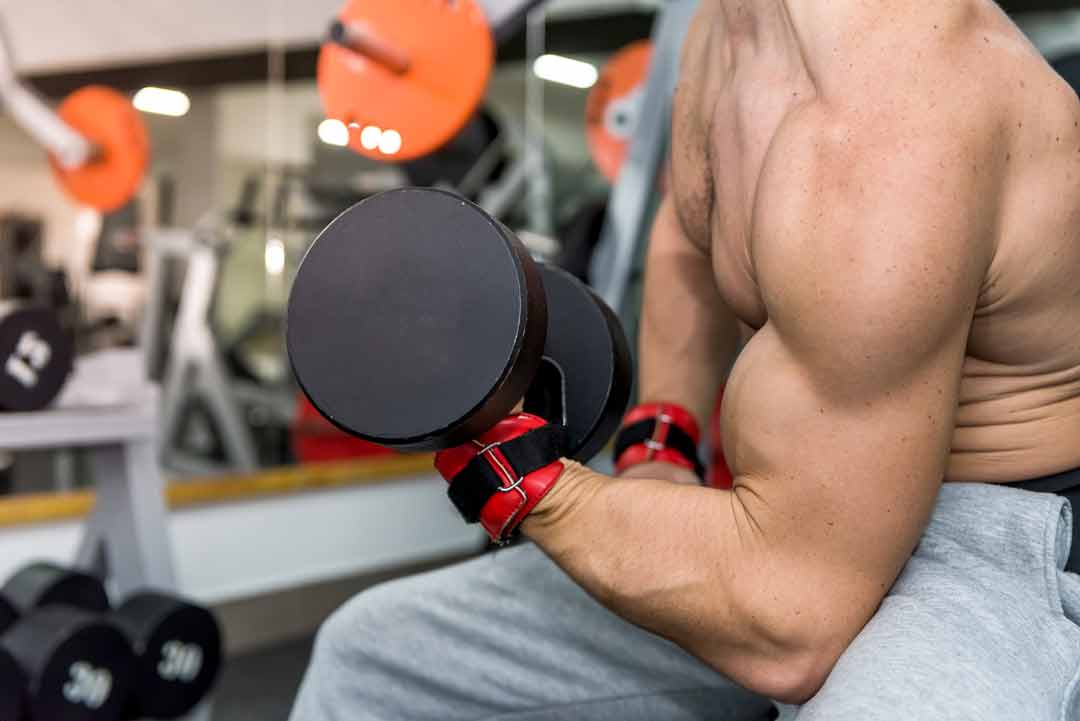Physical Vs Mental Fitness
There is but one way to live life to its fullest- being fit. Understanding the benefits of all-round fitness and knowing how active you should make it easier to improve the overall quality of your life. To help you live better, here’s how you can benefit from mental and physical exercise regardless of your age, sex or physical ability.
When talking about fitness, both mental and physical fitness come into play. More often than not, physical fitness gets plenty of attention, and for a good reason. A healthy body can counter conditions such as heart disease and diabetes, and help you maintain confidence as you age.
However, mental fitness is just as important as physical fitness, and should not be neglected in your self-betterment plans.
Mental fitness means having a brain and emotional health in tip-top shape. It may not necessarily mean training to ace an IQ test, but a series of exercise that helps slow down, decompress and boost a flagging memory.


Aerobics (cardio)
Aerobics involves maintaining an increased heart rate for an extended period of time. Types of cardio exercises include running, swimming, biking, rowing, dancing, and jumping rope.

Strength
Also called Resistance Training. It’s a physical activity with the purpose of increasing muscle strength and mass. Examples include weightlifting, dumbbell and bodyweight exercises.

Balance
This is where you activate your abdominal muscles for stability and control of your body. Balance exercises can include yoga, tai chi and stability ball exercises.

Flexibility
Bragging about how much you can bench is no fun if you have trouble tying your shoes. Flexibility saves you from tight hips, hamstrings, hip flexors and makes you as strong as you can be.

Why you need to be fit and importance of physical fitness
Weight control leads you towards fitness
Along with diet, exercise plays an essential role in managing your weight and preventing obesity. To maintain your weight, the calories you are taking must equal the energy you burn. To lose weight, you must utilize more calories than you eat and drink.
Manage your sugar and insulin levels
Exercise can reduce your blood sugar level and help your insulin work effectively. This can lower your risk for metabolic syndrome and type 2 diabetes. And if you already have one of those diseases, exercise can help you to maintain it.
Feel Happier through fitness
Exercise has been shown to improve your mood and reduce feelings of depression, anxiety, and stress. It produces variations in the parts of the brain that control stress and anxiety. It can also boost brain sensitivity for the hormones serotonin and norepinephrine, which relieve feelings of depression.
Better Mental Health and fitness
Regular exercise can have an extremely positive influence on depression, anxiety, ADHD, and more. It also relieves stress, increases memory, helps you sleep better, and boosts your overall mood. You don’t have to be a fitness fanatic to reap the benefits – browse through our site and discover how to reap these benefits.
How to Achieve Mental Fitness
Be positive with yourself and improve your fitness
Affirmation, or positively talking to yourself, involves strengthening neural pathways to bring your self-confidence, well-being, and satisfaction to a higher level. To start, make a list of your good qualities. Remind yourself that you don’t have to be perfect. Set goals for what you want to make better and start small to avoid becoming confused.
Stop Multitasking
Many think that multitasking enables you to get more things done at once, but it creates more problems than it solves. Focusing on one task at a time will improve your concentration and help you to be more productive.
Try Something Different
New practices can also set you on the way to mental fitness. You can fit new approaches into your daily life by trying new foods, new ways to accomplish routine tasks, traveling to new places or trying a new route to the grocery store.
Read More
Reading is great for your brain. Your brain processes every word you read, including this one. Beyond the mechanics, reading helps you visualize the subject matter on the pages before you, and imagine what voices sound like in the written dialogue.
This can also be a great relaxation technique
Top Fitness Tips for Mental and Physical Exercise.
General physical fitness and targeted exercises to improve stability can prevent falls. But so can staying mentally ready to maintain brain health. A sharp mind helps you to think — and stay — on your feet. Join us and learn to strike a balance.
No Results Found
The page you requested could not be found. Try refining your search, or use the navigation above to locate the post.
150 Exercises You Can Do
As a bonus, we are giving a free fitness exercise ebook to start your healthy lifestyle
5 Incredible Ways to Alleviate Muscle Imbalance
It’s really disappointing to put a lot of work and time to reach your goals in the gym only to result in muscle imbalance. You need to take another set of weeks to fix it and put things back to normal. But setbacks are realities in your pursuit of fitness. At least with this experience, you’ll learn to more careful in your routines.

Fixing muscle imbalance is not as hard as you think. Once you are aware that you have this, the next logical thing to do is finding a way to correct it. Here are our tips on how to do it.
1. Work on the root cause (mobility/flexibility)

Thinking that it might be the result of bad technique, look into it and find out why.
- Perhaps, it is because you are not as focused.
- It may be because you simply learn the exercise wrong.
- Or is it because you are not as mobile and flexible?
Let’s say that you have tighter quads, hamstrings, and gluts on one side of your body. For sure, it will definitely play a trick on you while you are executing some of the techniques that you need to do, leading to muscle imbalance.
Same goes when you keep one shoulder from moving, the result of your bench press and shoulder press will have one side more stressed out than the other.
When you have determined that specific part of your body having problems, then you can improve on moving and flexing the part to make sure that the imbalance does not come back anytime soon.

2. Work on the weaker muscles first
Our bodies definitely favor one side over the other, thus resulting in one side becoming more dominant. And besides, not all are given the gift of being ambidextrous, so you have to pick a side.
And besides, things are more comfortable when you do it with your more dominant side – I mean, dumbbells and barbells will be easier to lift because you are stronger on that side.
Unconsciously, you instantly train your more dominant side when you do unilateral exercises. When you hit the gym, you immediately train you more dominant side right there and then when it is supposed to be your lower strength side that should benefit more from this.
With all this, now you know that it is essential to train your lower strength side first – all the time!
3. Increase to volume on the weaker muscles
Given the points above, if you train your dominant side first, you will set the standards high for the lower strength side. This then makes the muscle inequality even worse because the lower strength side is not able to adjust and keep up with the routine you set our for your workout session
If you begin with the lower strength side, you will be able to determine the activities and exercises that apply to the capability of the lower strength side. For example, if you want to explore and do 3 sets of 8 reps on lunges and your lower strength side can only do 8,6, and 5, wanna see what happens?
I’ll tell you what – that is what your stronger side will adjust to and do. We know you can do more, but no, take it easy on your lower strength side.

4. Do extra work on the muscle imbalance
There is a big chance that imbalances exist because you prefer to work on some parts of your body and not all.
This isn’t a drill, and it’s not something I’m saying to annoy you.
I just really wanna help out. As a matter of fact, this something familiar. Imbalances then tend to exist because you put more effort into pressing routines for your chest that strengthening your back by doing pulling exercises.
Or achieving that Hugh Jackman or Dwayne Johnson look that is heavy on the top but weightless in the bottom because you focus more on the upper body rather than balancing it out with the lower body.
You can develop muscles to particular areas using either one or both of these steps:
Increasing Overall Volume
Having a lagging body part? Put more effort in there! But if this is not workable, then add in a few more routines to your current roster.
A good example will be if you are having trouble in your back because it is smaller than your chest and you only train three times a week, then you can add in some more routines targeting your back to develop it along with the rest of your body.
Though if you got time and you train in 5 times a week and risk fatigue from working out, then you can lessen some of the routines trying to develop the other parts of your body and put in that extra time for some back exercises.
A well-balanced workout touching base with your whole body is more than enough to achieve and be consistent with your body goals. And this is a great way to really focus on the parts that need a little bit more working out.
Increase Training Load
If you want to challenge yourself, then you can always increase the routines that you have set out for the lower strength part – push yourself to the limit!
You can choose to increase the weight of whatever you are lifting, lessen your rest periods, or add in more reps. At the end of the day, the main objective is to make sure that all the muscles in your body are functioning as well as they are developing.
Over and over again, I tell that there is nothing wrong with adjusting your workout time with the other parts of your body to give way and strengthen your back.
Note: You will see that both methods are substantially connected because when you choose to do one, you will, more often than not, apply and do the other.
5. Strengthening on the weaker muscles exercises

Say, for example, and your right pec is stronger than that of the left, you will see that that the right side of the bar will be lifted up a little bit more quickly and will be slower to fatigue. As a result, your left pec will not be as developed as it is not used as much.
What you must do is try barbell exercises, like the barbell and dumbbell bench press, this is effective in making sure that each side of the body gets their fair share of work out.
These exercises also allow the body to have a balanced work out since both sides are functioning and exerting effort without having the dominant muscle take over and leaving the lower strength muscle underdeveloped.
Here is a list of switches that you can do:
Barbell bench press: Dumbbell bench press (flat or inclined)
Barbell squats: Dumbbell lunges or pistol squats
Barbell bicep curls: Dumbbell bicep curls (hammer or normal)
Barbell shoulder press: Dumbbell shoulder press (seated or standing)
Which Strategy is Best of Which Type of muscle inequality?
You can pick out from any of the methods mentioned above to help fix your imbalance.
However, based on my personal experience, some ways are specifically better for different types of imbalances.
Muscle Strength Inequality
Unilateral exercise, such as switching from barbell to dumbbell, can cause a muscle or muscles to develop alone i. e. from bent over rows to single-arm rows.
Always think about the lower strength side and allow the stronger side to adjust to that of the lower strength side so as not to further develop the stronger side of you and totally leave out the lower strength ones.
Let the weak side decide on what reps to do, what routines to fulfill and how long rest time should be and apply it to the stronger side.
Do not be afraid to throw in some additional training or exercises to further develop your weak areas. For example, your back is lower strength thank you chest, so put in a little bit more effort on your back.
Symmetrical Muscle Inequality
Unilateral exercise, such as switching from barbell to dumbbell, can cause a muscle or muscles to develop alone i.e. from bent over rows to single-arm rows.
Always think about the weaker strength side of the body and allow the stronger part of the body to adjust. Focus on developing the side with less strength. This will eventually make your overall power greater.
Let the weak side decide on what reps to do, what routines to fulfill, and how long rest time should be and apply it to the stronger side.
In the long run, you will notice the difference in terms of improvements in the muscle imbalance, though if you see that the problem is still there, then continue to add in more work to the weak side.
Proportional Muscle Inequality
Exert extra effort in making sure that the areas needing improvement are being tended to by applying additional reps and routines.
Alot more time and effort in developing that struggling area, even if it means giving way to the ones that are already fully developed.
Put more attention to making sure that the problem area is getting stronger.
IMPORTANT NOTE: You may not lose weight as muscle is significantly heavier. Focus on shape and tone. The results won’t be seen overnight. It will take several months with consistency, focus, and lot of effort.

Final Say
Body muscle imbalances are inevitable when you are training with weight. We all tend to favor one side more than the other. We do need to take stock and focus on rebalancing the exercises to avoid the imbalance. But you are not alone in this. Know that it might be an unfortunate part of working out, but it is something that can be fixed. Continue to work it out the focus of the side of the body that needs it most. The results will come as time goes by.
And again, remember these five steps to help alleviate muscle imbalance:
- Work on the root cause of, i.e., mobility/flexibility
- Work on the lower strength side first
- The lesser strength side should dictate the work volume
- The lesser strength side should dictate the work volume
- Use unilateral/ one-limb exercises
Other Articles you may like.
Register Now
Sign up today and Get Expert Fitness Advice Right delivered right in your mail


